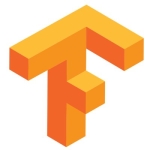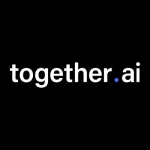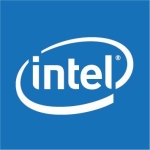What is our primary use case?
We've created a platform to build business use cases that we sell to our customers. We have partnerships with Microsoft, SAP, Databricks, and Azure OpenAI.
We have two main focuses with Azure OpenAI:
- Enterprise Solutions: We've built solutions that act as an "enterprise copilot," digitizing and transforming processes within departments like HR, legal, finance, recruitment, IT support, and contact centers.
- Industry-Specific Solutions: We've developed solutions tailored to specific industry problems. Examples include automating airline ticket refunds, providing industry-specific customer support, helping customers plan their travel journeys, and assisting with hotel bookings.
Additionally, we integrate Azure OpenAI with data, analytics, and other areas to provide customers with 360 insights and transform customer journeys across various enterprise processes. We leverage the captured data to drive these initiatives.
How has it helped my organization?
OpenAI integrates seamlessly with the broader Microsoft Azure ecosystem, and that provides synergies with the other solutions. This integration makes it much easier to build solutions.
Additionally, we can create custom solutions using Microsoft Azure development tools as needed. Since we're a software engineering organization, we can leverage the OpenAI APIs to go beyond the standard capabilities.
What is most valuable?
The modular design is very clean. The modules are very well-trained. It significantly reduces computational time compared to previous technologies. Plus, OpenAI provides a lot of training materials that allow us to quickly deploy solutions.
There are development studios and configurations where people ensure that security is taken care of. So, Azure configurations ensure security and compliance – those guardrails are in place. All these features work seamlessly when you use Azure and OpenAI together. The security features are provided by Azure.
It also integrates with our existing enterprise tools like the broader Microsoft software suite including Office 365.
What needs improvement?
The product features themselves are fine. However, with Microsoft scaling the service so much, the support structure needs to keep pace.
When solving complex issues, the process of interacting with Microsoft can be quite time-consuming, especially if you don't have a preferred agreement. For enterprise-level solutions that are mission-critical, real-time support is vital.
So, real-time support from Microsoft is an area for improvement, especially for complex business use cases. Right now, the support is suitable for use cases that won't directly impact the enterprise in a major way if there's a temporary issue.
Similar to what Google is doing with its marketing module, having seamless interaction with multimodal data – like videos, text, and other sources – at an optimal cost would be great. So, seamless interaction across multiple data types at optimal cost.
Multimodal interactions with optimal pricing. As use cases become more complex, and with the rise of edge devices, this becomes increasingly important.
Buyer's Guide
Azure OpenAI
September 2025
Learn what your peers think about Azure OpenAI. Get advice and tips from experienced pros sharing their opinions. Updated: September 2025.
868,759 professionals have used our research since 2012.
For how long have I used the solution?
I have been using it for 14 months now. We started using it three to four months after its initial release.
What do I think about the stability of the solution?
I would rate the stability a nine out of ten.
What do I think about the scalability of the solution?
For smaller organizations with individual or limited use cases, the transaction costs can be a bit higher and costly. However, when we have larger-scale deployments across multiple use cases, the ability to scale is quite good. That's when the ROI (return on investment) really comes into play for an organization.
I would rate the scalability a nine out of ten. We successfully deploy it for multi-billion dollar enterprises. However, with the right configuration, it can be commercially viable for smaller businesses as well. We need to tune it properly for that use case.
How are customer service and support?
Everyone has rushed into this technology. Therefore, the rapid adoption of this new technology means there are more people working with it than there are experts to provide support.
How would you rate customer service and support?
How was the initial setup?
It's almost too easy to set up. Because it's so easy, many people are jumping in and creating half-baked solutions without fully understanding the risks, security concerns, and potential problems. What's happening is that people without deep experience in operating large technology solutions are offering these solutions to businesses.
This can cause issues. For example, a recent case involved an airline in North America facing legal issues due to incorrect information provided by a chatbot. Now, there are questions of liability – is the chatbot responsible, or the business system itself? The business ended up paying a penalty.
So, responsible AI is key. The ease of setup is good from a technical standpoint, but we need governance, compliance, and checks and balances. Platform providers aren't emphasizing these aspects, and currently, there aren't regulations mandating it. So, while easy configuration is beneficial, we also need easy ways to ensure compliance, governance, security, and safeguards. All of these need to be considered – not just the ability to build something.
Since Azure itself is a cloud platform, we haven't come across many use cases where someone creates a purely private instance.
What was our ROI?
We can see results within weeks after implementation. The implementation itself might take six to ten weeks. Once live, we can see measurable differences within three to four weeks. Of course, with any new technology solution, there's a stabilization period, and the full impact is best understood over time.
However, we can see immediate productivity benefits. Then, within six months or so, we might start seeing cost benefits. Within a year, we can potentially see improvements in feedback and metrics like NPS (Net Promoter Score).
Since everyone is on the Azure platform, Azure OpenAI's interactions with the technology generate quite a lot of data. This data can be used to quickly establish relevant digital metrics.
What's my experience with pricing, setup cost, and licensing?
We've been a long-term Microsoft shop with an enterprise agreement, so that gives us some advantages. As an Azure-certified partner, we receive preferred pricing. However, AWS also has a very competitive solution.
Ultimately, the best choice depends on your relationship with Microsoft.
Azure OpenAI doesn't use a traditional licensing model. Instead, it's interaction-based, meaning transactional. The cost depends on the complexity of the business use case and the amount of computing used within OpenAI.
It's important to engineer your solution carefully and implement controls. With any AI solution, there's a risk of operational expenses spiraling if the team doesn't put guardrails in place.
Tools like Azure Synapse can help ensure usage stays within defined limits. This is true for any cloud technology – you need financial controls to prevent unexpected costs.
I would rate the pricing a five out of ten. It's reasonably priced for now. It will likely become more affordable over time. As more providers offer support services within the Microsoft ecosystem and as user feedback shapes the technology, we'll see improvements. Because the technology is only about 20 months old, there's a lot of potential for growth.
What other advice do I have?
Definitely experiment with it. They're leaders in this space. For simple initial use cases, anyone with a basic understanding of IT operations and service management can get started.
However, when scaling to an enterprise level with multiple use cases, it's essential to bring in experts. You need to consider security, financial risks, and potential reputational risks.
Remember, it's a powerful tool, and like any tool, how you use it matters. Ensure those using the tool fully understand how to do so responsibly.
Considering the current market and its competition, I'd rate it a nine out of ten. Considering them purely as a service provider in this line of business. It's still an evolving technology, so there's room to reach the full ten.
Which deployment model are you using for this solution?
Hybrid Cloud
Disclosure: My company has a business relationship with this vendor other than being a customer.





















